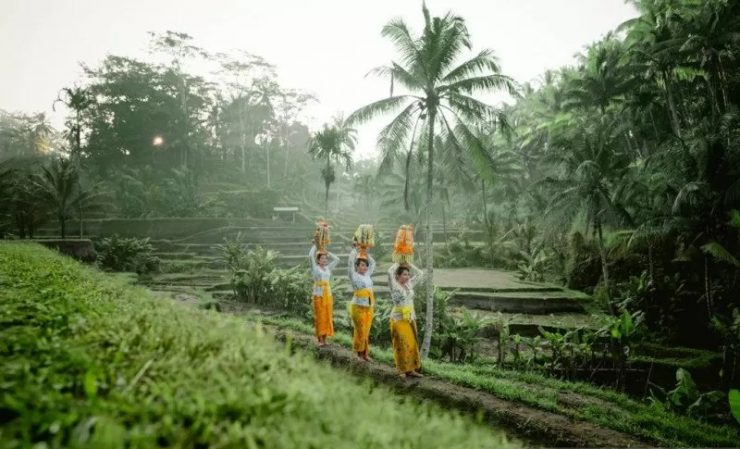STORYTELLING Video is considered as an effective way to promote and introduce the values or meanings contained in every tourist destination in Indonesia.
According to the Deputy for Tourism Products and Organizing Activities (Events) Ministry of Tourism & Creative Economy, Rizki Handayani, said that currently it is important for tourism actors to be able to raise the values or attractions of tourist destinations in each region.
“One of them is visual storytelling through Video Storytelling. The main focus now is to promote tourism destinations and introduce tourism products, because tourism is an experience that has a value or story contained behind existing tourist destinations, such as Subak in Bali for example,” she said.
Rizki Handayani added it, people say, subak is a terraced rice field, but apparently the terraced rice fields in Bali have a different value. The values of this tourist destination that we must introduce to the people of Indonesia. So that there is a sense of pride, how great our ancestors in maintaining and preserving Indonesia’s cultural heritage.
Meanwhile the Chairperson of the Indonesia Heritage Trust/Indonesian Heritage Conservation Agency, Catrini Pratihari Kubontubuh, said that Subak is not just a rice terraces or irrigation. However, Subak is an organization of farmers managing irrigation that is socio-cultural in a certain paddy field, has a water source, has a subak temple, and is autonomous.
“Every Balinese person who tells about Subak certainly depicts mountains, rice fields, temples, and human activities. Actually this is the essence of Subak. The first time the term related to agriculture appeared, it was written on the Sukawana Inscription in Bangli in 882 which mentions land and agricultural land (rice fields) and perlak (fields),” said Catrini.
Meanwhile, she continued the Klungkung Inscription in 1071 and the Bandung Pandak Inscription (Tabanan) in 1072 had mentioned the term Seuwak which was eventually known as Subak. At present, the number of Subak in the whole area of Bali is 1,599 Subak, with 76,000 hectares of rice fields.
On 29 June 2012 UNESCO established Subak as one of the World Heritage. Uniquely, this Subak is not designated as a World Heritage part of “Nature” or “Culture” but as a manifestation of the philosophy of Tri Hita Karana.
Tri Hita Karana’s philosophy is the harmonization of Balinese people’s lives which emphasizes three important aspects namely Parahyangan; human relationship with the creator, Pawongan; human relations with others, and Palemahan; relationship with the environment.
“Very rarely in Bali we see that the rice fields are dirty, there is no garbage in the waterways. Because it all becomes the joint responsibility of the members of Subak. Usually there is a separate fine if the water channel has rubbish and the head of Subak has the right to bring this about,” Catrini noted.
Catrini also added the intended tourist usability is how a tourist destination called “permaculture”. Cooperation between agriculture and tourism activities, where tourists are given the opportunity to see, feel, and have direct experience doing agricultural activities with farmers.
To tell the values contained in Subak requires a media that can describe its beauty and superiority, such as through visual telling.
At the same time content writer, Astrid Savitri explained that visual storytelling is a story that is told through visual media, such as photos, videos, symbols, colors, or illustrations. Visual storytelling is very important for humans. “Because 90 percent of the human brain receives information in visual form.
She affirmed that through visual information, a person will be easier and faster to understand information and make information more interesting. Video Storytelling is a storytelling technique using an interesting video format. Usually used to tell a brand, tourist destination, or tourist product.
“With Video Storytelling we can introduce destinations and tourist products by telling the value contained therein. Making stories that can touch hearts, spark emotional connections, and present solutions for tourists who watch the video,” Astrid concluded. [antaranews/photo special]
















